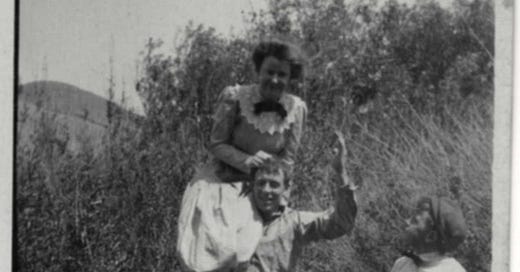I’m hanging out on Zoom with my camera off and mic on mute. No, I’m not just lurking, I’m attempting to be productive. We have a weekly write-in where we log in to write alone, together. It’s an appointment we keep with ourselves to be sure we get some writing and/or submitting done at least this one day each week, although ideally we’re all doing a little bit every day.
Today, I’ve picked up where I left off last week on my hybrid memoir slash I don’t know what it is yet and I’ve written maybe 150 words but it’s stop and start. I keep getting caught up in the past—and then going back to research what I don’t know.
Here are some of my search questions that have stopped me this morning:
What elements make up clay?
What kind of clay is found in Alameda County?
What kind of clay were they mining in Carnegie, California, for the Carnegie Brick and Pottery Company?
Ladies dresses 1910, thinking specifically, what were they called? What were they made of? Were there different kinds of dresses for different circumstances? For instance, early swimwear was essentially just a dress that women wore into the water.
This is what has sent me down this particular rabbit hole: My great-grandfather Rufus Keeler standing ankle-deep in the creek, with great-grandmother Mary on his shoulder.
Other relevant questions that I am wondering about:
Who is that child? How old? Why is he there?
Who is taking the picture?
What were the “rules” about men and women fraternizing?
Where are they?
Absent answers, I’m having to think my way through the questions because I want to write this photograph into life. Into the story. I want to be there with them, to feel the water on my ankles, the sun in my hair.
I think they are Carnegie, home to the Carnegie Brick and Pottery Company, where Rufus and Mary met. I am imagining them on a naturalist walk, enjoying the outdoors, looking for wildlife or just taking some air. The boy is the child of another worker, and their father (possibly mother, but seems unlikely) is behind the camera. I imagine by now they must know each other fairly well because otherwise this seems a bit cozy. Are they crossing the stream? What can the boy’s short pants, Rufus’ work clothes, Mary’s dress and hair style, tell me about the occasion? The period?
Really, I just wanted to write today! But I keep starting and stopping—
But am I just putting off the real work of digging into the scene in the interest of accuracy?
So here I am, stalling.
Or am I?






For this project, you are a weaver. Research is your warp; words, your weft. The resulting tapestry will be the story: your interpretation of hidden history.
Not stalling because the images will wind their way into your work. I missed this morning. Hopefully, next week.